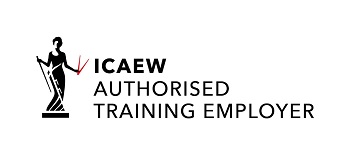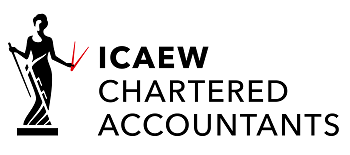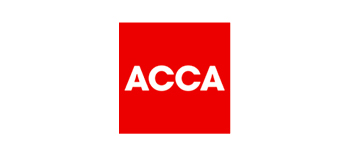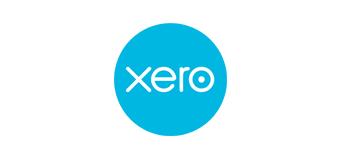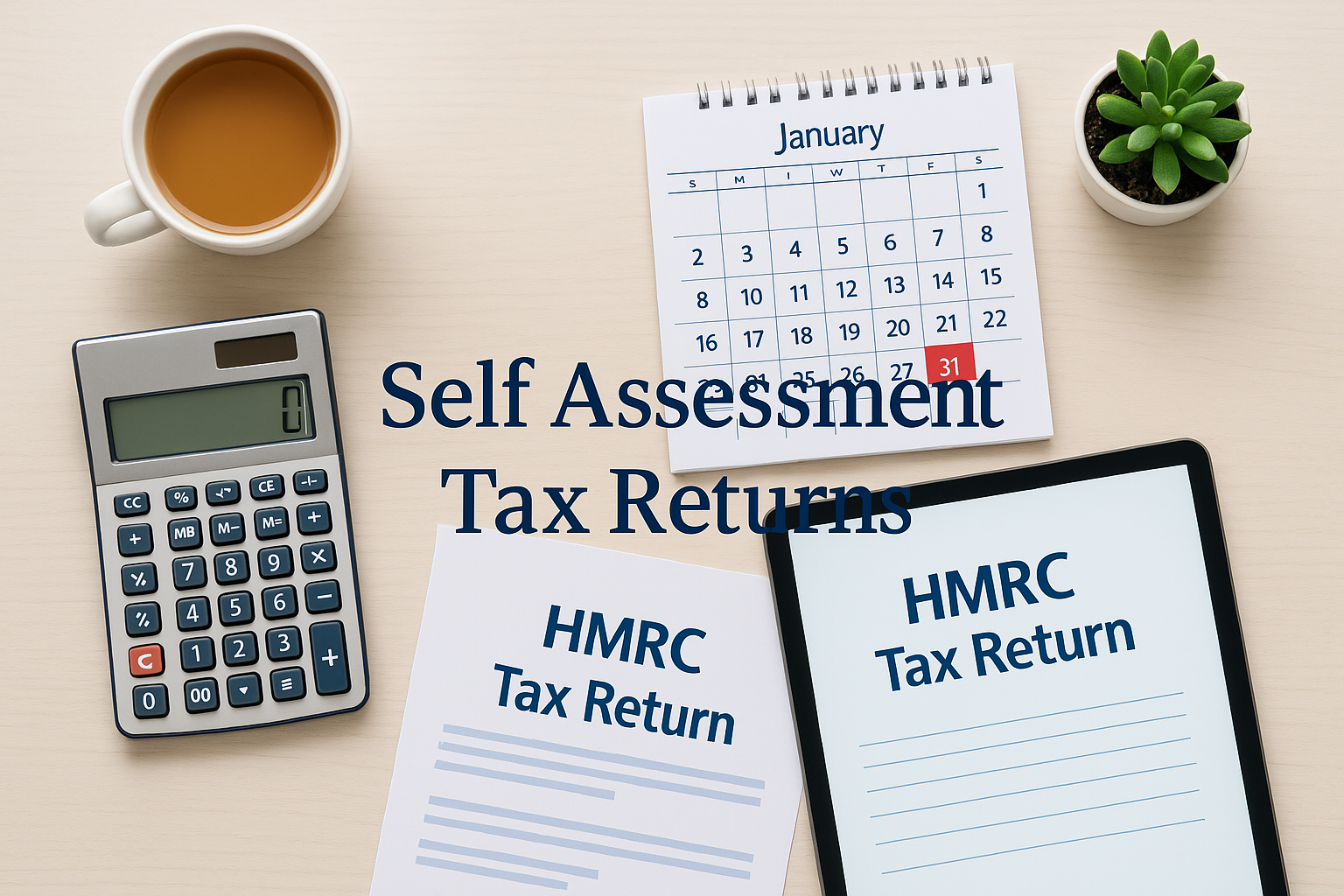
Navigating the maze of UK tax regulations doesn’t have to give you a headache. Here’s everything small and medium business owners need to know about Self Assessment tax rates in 2025.
Introduction
Tax season. Those two words can send shivers down the spine of even the most organised business owner. I remember my first year of self-employment – staring at HMRC’s website like it was written in hieroglyphics, wondering if I’d ever understand what I was supposed to pay and when.
If you’re feeling that same knot in your stomach when someone mentions “Self Assessment,” you’re not alone. Every year, millions of people across the UK scramble to understand their tax obligations, often leaving it until the last possible moment.
But here’s the thing: understanding Self Assessment doesn’t have to be complicated. With the right knowledge, you can navigate HMRC’s requirements with confidence, potentially save money, and definitely save yourself from stress-induced hair loss!
In this guide, I’ll walk you through everything you need to know about HMRC Self Assessment tax rates in simple, human terms. No accounting jargon, no overly complex explanations – just straightforward information that you can actually use.
Do I Need to File a Self Assessment Tax Return?
Let’s start with the most fundamental question: do you even need to worry about Self Assessment?
The short answer is: it depends on your income sources. You can find detailed guidance on the official HMRC Self Assessment page.
Generally, you’ll need to file a Self Assessment tax return if:
- You’re self-employed or a sole trader with income over £1,000 (before tax relief)
- You’re a partner in a business partnership
- You receive rental income
- You have significant income from savings, investments, or dividends
- You need to claim tax relief on things like pension contributions or charitable donations
- You have capital gains from selling assets
- You have foreign income
- You’re a high earner (over £100,000) even if you’re employed
Self Assessment isn’t typically required if your only income is from employment where tax is deducted via PAYE, and you have no other significant sources of income.
Think of it this way: if HMRC doesn’t automatically know about your income (because it isn’t taxed at source), you probably need to tell them about it through Self Assessment.
Self Assessment Registration: Getting Started
Before you can file your tax return, you need to register for Self Assessment. This is where many people first hit a roadblock, but it’s actually quite straightforward. Check out our guide on Business Start-ups and Registrations for more help.
You can register online through HMRC’s website. You’ll need to provide some personal details and then you’ll receive a Unique Taxpayer Reference (UTR) – think of this as your tax ID number. It’s incredibly important, so keep it safe!
A word of warning: don’t leave registration until the last minute. It can take up to 10 working days (sometimes longer) to receive your UTR by post, and you’ll need this before you can file.
Key Tip: The deadline for registering for Self Assessment is 5 October following the tax year in which you need to submit a return. For example, if you need to file a return for the 2024/25 tax year (which ends on 5 April 2025), you must register by 5 October 2025.
Understanding Self Assessment Deadlines
Missing deadlines can result in penalties, so it’s crucial to know when things are due. You can find a helpful overview on our Tax Calendar page.
Here are the key HMRC deadlines to mark in your calendar:
| Deadline | Action Required |
|---|---|
| 5 October | Register for Self Assessment |
| 31 October | Submit paper tax returns |
| 31 January | Submit online tax returns |
| 31 January | Pay your tax bill |
| 31 July | Pay any “payment on account” instalments |

The UK tax year runs from 6 April to 5 April the following year. This means your 2024/25 tax return covers income received between 6 April 2024 and 5 April 2025.
Self Assessment Tax Rates: What You’ll Pay
Now for the part everyone wants to know about – how much tax will you actually pay? Our Accounts and Tax services can help you figure this out precisely.
Self Assessment tax rates are the same as regular income tax rates. For the 2024/25 tax year, the rates for most income in England, Wales, and Northern Ireland are:
| Band | Taxable Income | Tax Rate |
|---|---|---|
| Personal Allowance | Up to £12,570 | 0% |
| Basic Rate | £12,571 to £50,270 | 20% |
| Higher Rate | £50,271 to £125,140 | 40% |
| Additional Rate | Over £125,140 | 45% |
| (Note: Scotland has different income tax bands) |
Remember, these rates apply to your taxable income after your tax-free Personal Allowance has been deducted. However, if your income exceeds £100,000, your Personal Allowance is reduced by £1 for every £2 you earn above this threshold. Consider Personal Tax Planning to optimise this.
Additionally, if you’re self-employed, you’ll also need to pay National Insurance contributions (NICs). Check the latest self-employed National Insurance rates here.
- Class 2 NICs: A flat weekly rate (though changes are planned).
- Class 4 NICs: A percentage of your profits above a certain threshold.
A real-world example: Let’s say you run a small consultancy business making £45,000 profit. Your tax would work out roughly like this:
- First £12,570 – £0 tax (Personal Allowance)
- Remaining £32,430 – £6,486 tax (at 20%)
- Plus National Insurance contributions
So your total income tax bill would be around £6,486 (plus NI contributions), giving an effective tax rate of about 14.4% on your total income.
What Income Must Be Reported on a Self Assessment Tax Return?
When filling out your Self Assessment, you need to report all your taxable income. This includes:
- Self-employment profits – Your business revenue minus allowable expenses
- Dividends – If you own shares in companies
- Rental income – From properties you let out (see our Property Accounts service)
- Capital gains – Profits from selling assets like property or shares
- Interest – From savings accounts
- Foreign income – Money earned overseas
- Employee income – Already taxed through PAYE (but still needs to be reported)
- Pension income – Including state pension payments
I once worked with a client who forgot to include rental income from a small flat they owned. They assumed that because the tenant paid tax, they didn’t need to declare it. This resulted in an HMRC investigation and a hefty fine. Don’t make the same mistake!
Self Assessment Tax Payments: How to Pay
Once you’ve calculated what you owe, you need to actually pay it. HMRC offers several payment methods:
- Online or telephone banking (Faster Payments)
- CHAPS
- Debit card online
- Direct Debit (allow time to set up)
- At your bank or building society (using an HMRC paying-in slip)
- By cheque through the post (allow time for posting and processing)
Online payments are generally the most efficient, providing quick confirmation.
Payment on Account: If your tax bill is over £1,000, and less than 80% of your income was taxed at source (like PAYE), you’ll likely need to make “payments on account” – advance payments towards your next tax bill. These are two equal instalments, due on 31 January and 31 July, each usually 50% of your previous year’s tax bill. This can catch many first-timers off guard, as it effectively means paying 150% of your tax bill in your first year of Self Assessment involving payments on account.
What Happens If You Miss the Self Assessment Deadline?
Life happens, and sometimes deadlines get missed. But what are the consequences? HMRC outlines the penalties for late filing and payment here.
If you miss the filing deadline (31 January for online returns), you’ll automatically receive a £100 penalty. If your return is more than 3 months late, you’ll be charged an additional £10 per day (up to a maximum of £900).
For very late returns (6 months or more), you’ll face further penalties of either £300 or 5% of the tax due, whichever is higher.
Similarly, paying your tax late incurs interest charges and potential penalties.
The best advice? If you know you’re going to miss a deadline, contact HMRC as soon as possible. They may be more understanding if you’re proactive. Alternatively, contact us for help managing your deadlines and potential issues.
Claiming Tax Reliefs on Your Self Assessment
One of the advantages of Self Assessment is the ability to claim various tax reliefs that can reduce your bill. Our Personal Tax Planning service can help identify all applicable reliefs. These include:
- Business expenses – Costs wholly and exclusively for business purposes
- Pension contributions – Tax relief on money paid into pension schemes
- Charitable donations – Tax relief through Gift Aid
- Marriage Allowance – Transferring part of your Personal Allowance to your spouse (if eligible)
- Working from home allowance – Flat rate or actual costs for household expenses if working from home
I’ve found that many small business owners miss out on claiming legitimate expenses. Keep comprehensive records of everything you spend on your business – from that LinkedIn Premium subscription to the mileage on business trips.
Using the Self Assessment Calculator
Before you submit your return, it’s worth using an HMRC tax calculator or a calculator provided by accounting software. This will give you an estimate of what you owe, helping you budget accordingly.

Tips for a Stress-Free Self Assessment Experience
After years of helping small business owners with their tax returns, I’ve compiled these top tips:
- Keep records throughout the year – Don’t leave everything until January. Consider bookkeeping services.
- Set aside money for tax – Aim for 25-30% of your profits in a separate account.
- Understand what you can claim – Don’t miss out on tax reliefs.
- Use accounting software – Many options integrate directly with HMRC. Explore Cloud Accounting.
- Consider getting professional help – An accountant can often save you more than they cost. See our services.
- File early – Avoid the January rush and give yourself time to pay.
- Check, check, and check again – Errors can lead to penalties. Ensure tax compliance.
How FreeAgent Can Simplify Your Self Assessment
If you’re looking to make Self Assessment easier, accounting software like FreeAgent can be a game-changer. These platforms automatically track income and expenses, calculate what you owe, and often file your tax return directly to HMRC. Many accountants, including us, work with cloud accounting software like FreeAgent, Xero, or QuickBooks.
As someone who spent years manually tracking everything in spreadsheets, I can tell you that good accounting software is worth its weight in gold during tax season.
Conclusion
Understanding HMRC Self Assessment tax rates doesn’t have to be overwhelming. With proper knowledge, organisation, and the right tools (or professional support), you can navigate tax season with confidence.
Remember, staying on top of your tax obligations isn’t just about avoiding penalties – it’s about having clarity on your financial situation and making informed business decisions.
Have you had experiences with Self Assessment that others could learn from? Are there aspects of the process you still find confusing? Share your thoughts in the comments below, and let’s help each other navigate the tax system more effectively.
And if you found this guide helpful, don’t forget to bookmark it and explore our other resources on the Ask Accountants UK Blog.
